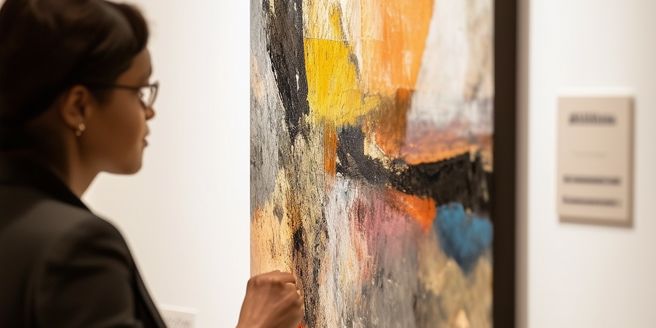
The Connection Between Art Appreciation and Professional Image
Art appreciation plays a crucial role in shaping a professional’s personality. In the workplace, it can foster creative thinking and problem-solving skills, thus enhancing overall productivity. Additionally, art appreciation can provide a therapeutic outlet, allowing individuals to manage stress and enhance their mental wellbeing. Encouraging a deeper understanding of arts can not only instill a sense of aesthetic refinement, but it can also enable individuals to develop a sharper eye for details, increase their ability to interpret and make sense of visual information. Moreover, it can enhance their awareness and understanding of different cultural perspectives, which can be an invaluable asset in the global business environment.
The Role of Aesthetic Sensibility in Business Communication
Participation and engagement in the arts can enhance aesthetic sensibility, fostering a stronger appreciation for aesthetics, thus improving effective communication in a business environment. Delving into artistic elements like painting, sculpture, or graphic design, individuals improve their understanding of color, form, line, and composition, which are key in shaping visual messages. This understanding isn’t only applicable to traditional forms, but also to varied communication mediums such as corporate presentations and e-mails, where the principles of color harmony, form balance, and smart composition can significantly impact the message’s reception. Additionally, marketing campaigns greatly benefit from these aesthetic principles, improving their visual appeal and, subsequently, conversion rates. Therefore, insight from immersion in the arts has a direct, significant impact on enhancing business communication effectiveness.
How Art Appreciation Enhances Creativity in The Workplace
The appreciation of art offers a powerful entry point to creativity and innovation, stimulating people to think inventively, and exercise their problem-solving skills in a unique way. In the employment sector, the creative skills nurtured by art appreciation are increasingly recognized, with employers valuing workers capable of bringing innovative thought, and strong creativity to their tasks. As industries evolve in response to rapid technological advancements, these skills become not just desirable, but vital. Through art appreciation, individuals can develop these crucial skills, becoming invaluable assets to modern workplaces.
Art as A Tool for Emotional Intelligence in Professional Settings
Artistic expression has long been celebrated for articulating and comprehending human emotions, thereby enhancing emotional intelligence. This wider understanding of emotions developed via art contributes to professional success.
Often undervalued, emotional intelligence, that is the ability to resonate with personal emotions and those of others, is fundamental for professional success. It leads to thriving relationships, effective decision-making, and conflict resolution.
Art provides a unique platform for managing unfamiliar or repressed emotions. It offers cathartic release that positively impacts mental health.
Moreover, art allows recognition and management of diverse emotional reactions. Encounters with varying artistic expressions let us mirror, scrutinize, and control emotional experiences, fostering a deeper understanding of personal emotions – a crucial factor for effective communication in the professional world.
Concluding, art is instrumental in understanding, managing emotions which in turn enhances self-awareness, empathy, leading to professional achievement.
Practical Ways to Incorporate Art Appreciation in Your Career
Art appreciation can greatly influence our lives and integrate smoothly into our professional life through various means. This can be achieved by visiting art exhibitions during leisure, where creativity is absorbed and the hidden elements in the artwork are interpreted, which deepens understanding and broadens perspectives. Participating in art-centered activities such as workshops or classes offers hands-on experience with diverse forms and techniques, encouraging a deeper exploration, and augmentation of skills, leading to a profound appreciation of the medium.
Art principles can also be applied at work, for instance in designing presentations or developing appealing reports, utilizing artistic problem-solving techniques. This not only leverages creativity but also opens the door for innovation. Artistic inspiration significantly alters professional perceptions, promoting innovative solutions and broadening the scope of vision. It provides diverse problem-solving angles and rejuvenates the mind, improving work performance and cultivating a continuous learning environment. Therefore, art’s influence in a career enhances creativity and enriches thought processes, inspiring and broadening world views.
The Impact of Art Appreciation on Work-Life Balance
Understanding and appreciating art aids in achieving a harmonious work-life balance by offering an escape from daily life. The myriad colors, shapes, and themes stimulate feelings of relaxation, not only reducing stress levels but also uplifting spirits and instilling a refreshing perspective. This perspective can spark creativity that enhances problem-solving or innovative thinking at work. An atmosphere that encourages mental agility and emotional stability is fostered by art, proving its integral role in both professional and personal life. Art’s importance amplifies when it promotes a healthy, happy environment within the workplace, further increasing employee efficiency and dedication, clearly showcasing that art’s appreciation is an ongoing cycle in the quest for balance and productivity.
